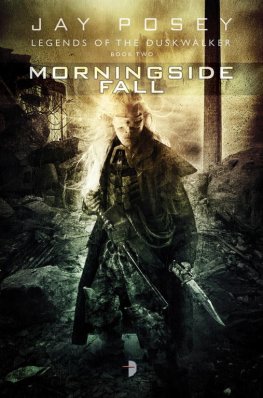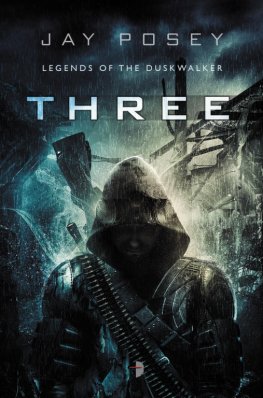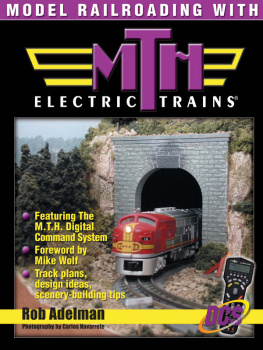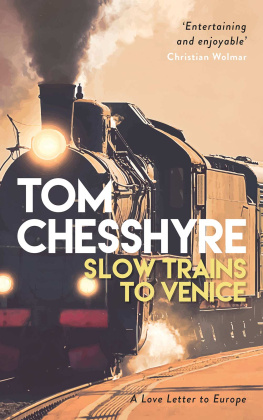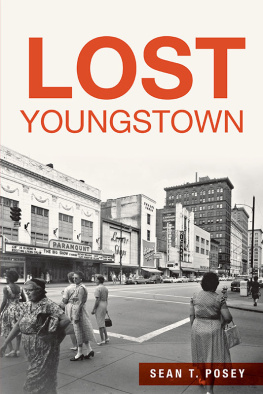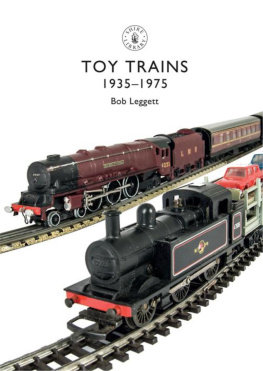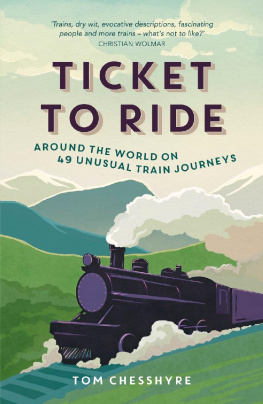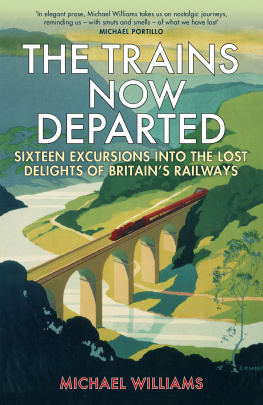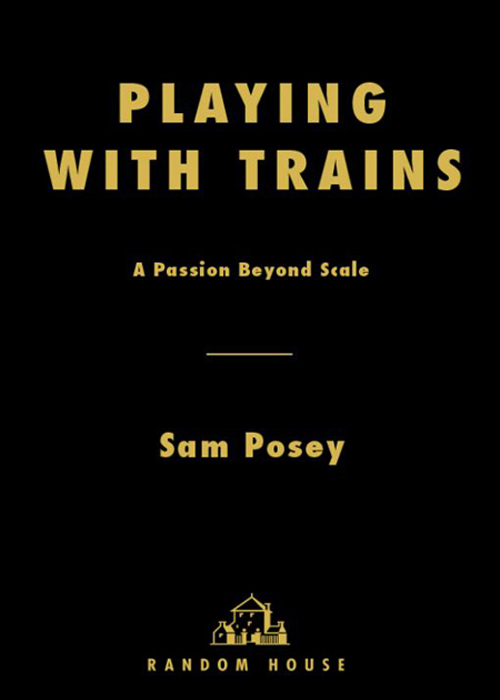
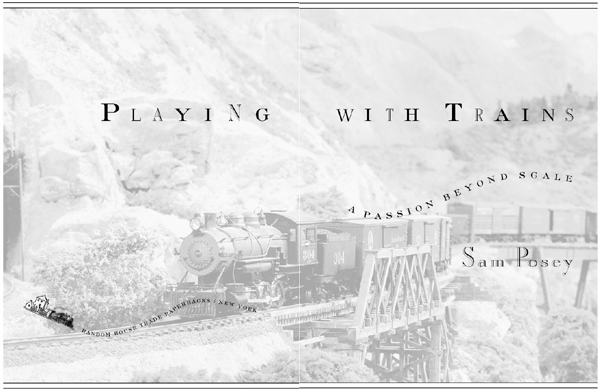
Table of Contents
TO ROLF AND JOHN
Fierce-throated beauty!
Roll through my chant with all thy lawless music, thy swinging lamps at night,
Thy madly-whistled laughter, echoing, rumbling like an earthquake, rousing all.
WALT WHITMAN,TO A LOCOMOTIVE IN WINTER
Praise for PLAYING WITH TRAINS
With the empathy and insight that could come only from a true hobbyist, Playing with Trains takes the reader through the model railroading world and introduces us to some of the hobbys most interesting personalities.... I found it immensely enjoyable.
TERRY D. THOMPSON, editor, Model Railroader
This is a book that anyone can enjoy, whether passionate about model railroading or not, because it is fundamentally a human story about finding a passion, learning how to be good at it, and thrilling to the joy of sharing it with loved ones and friends.
Road & Track
[Posey] is not only a fine explainer but also a first-rate stylist capable of the imaginative metaphor. And he deeply understands the minds of men our age.... Model railroaders will take this book to heart, but the non-modeler will also find Playing withTrains engaging, affectionate and eye-opening.
Chicago Sun-Times
Poseys book is the latest example of a growing number of books that could be cataloged as extreme writing, the literary answer to extreme sports.
USA Today
Poseys touching tribute to his hobby is both a sociological study and a personal journey. Anyone who has ever owned a train set or had a love affair with trains will relate.
Library Journal
Posey has a knack for allowing the human side of his story to shine through. His writing contains poignancy and beauty that raises a simple pastime to an evocative expression of the human spirit.... As the book chronicles this shared obsession, it becomes more than a profile of a hobby; it becomes an examination of a changing America and the loss of part of its past.... Whether youve ever found fascination in trains, or the inner sparks that make us human, Playing with Trains is a journey worth taking.
Bookpage
Posey writes with grace, wit and insight, and his book may send many of its readers heading for the hobby shop this holiday season.
News Journal
With genuine charm and affection, Posey portrays the railroaders, their layouts, and the passion that drives them.
Kirkus Reviews

AUTHORS NOTE
Like so many men of my generation (I was born during World War II), I fell under the spell of trains as a little boy. My father was killed in the war, and when I was six, my mother built me a layoutLionelthat gave me a miniature universe that I could operate on my own. Speed and control: I was fascinated by both, as well as by the way they were inextricably bound together.
A generation later, when my son, John, was small, I wanted to share my passion for trains with him, which to me meant having us build a layout together. As time went by, the thing kept getting bigger, and it took sixteen years to finish. Along the way, I became so interested in model railroading that I went in search of the countrys finest modelers to see what made them tick. I encountered a world of extremes. Extreme commitment. Extreme differences in approach to the hobby irreconcilable differences, in fact. These men were as tightly wound as any of the electric motors in their locomotives, and they were fiercely proud of their creations and ready to defend their turf. (As a former racing driver, I know a competitor when I see one.)
Except for describing my early enchantment with Lionel, I have kept the focus on a single scale: HO, the choice of most top modelers. I have omitted club layouts, many of which are superb, as well as large, professionally built layouts, in order to stick with the ambitions of the individual modeler.
Trains are a part of our national heritageand modeling them is, too. Its a hobby with proven staying power because so much is involved: Imagination. Building. Tinkering. Inventing. Self-expression. It takes work to get good results, but in the end you will have mastery and control of a world of your own making.
And you get to play with trains.
Sam Posey
Sharon, Connecticut
PART ONE
THE MIGHTY ZW
Im pregnant, my wife, Ellen, said, and right then I knew I would be building a train layout. I saw a layout as a birthright, since playing with trains had been such a big part of my life as a kid.
When our son, John, was born in June 1982, I remember gazing at his little fingers and thinking that they were scaled down from an adults in the same way model trains are scaled-down versions of the real thing.
My memories of trains went back to a wooden locomotive that I pushed along tracks spread out across my bedroom floor. At first, I was told to put the tracks away each night, but as I began to make the configurations more complex, I was allowed to leave everything in place, sometimes for weeks at a time. I built stations with my blocks, stuffed books under the rug to make hills, and designed loops that tunneled under my bed.
When I was four I ran into the living room Christmas morning to discover a locomotive that was made of metal and painted dark blue. A large key lay next to it. My mother showed me how a lever on top of the cab kept the spring mechanism from unwinding until I had the engine positioned on the tracks and its three passenger cars hooked up. Once released, the train accelerated down the straight, then flipped over at the first curve, leaving the wheels spinning in the air until the spring unwound. If I didnt wind it quite so much, the engine stayed on the tracks but expired after a lap, leaving me wishing I had wound it just a little tighter. This was an improvement over my wooden trains, which I had to push, but like most boys my age, I already longed for the next step: electric trains.
Lionel trains.
The word Lionel was magic. My Lionel train layout in our house in New York gave me the first inklings of an identity I could call my own. For first grade, I was enrolled at Buckley, a school for boys, where you were either a train guy or a fort guy no one had both trains and a fort. The forts were based on medieval castles. The most elaborate had drawbridges, portcullises, battlements, operating catapults, and moats that held real water. Lead soldiers could be arranged as attackers and defenders. But the only way to play with a fort was to move things around by hand, which recalled the effort that had gone into operating my wooden trains. The moment you sat back to watch, the action stopped. Trains were different.
Once it was established that you were a train guy and not a fort guy, the next choice was between the two major manufacturers of toy trains, Lionel and its archrival, American Flyer. The differences were few but important. American Flyers engines and cars had a cheap, plastic feel, and their couplers were ungainly hooks that did not even attempt to look like the real thing. Lionel, by contrast, had authentic couplers, and big, solid locomotives and cars. It was their track that was flawed: instead of a realistic two-rail system, Lionel had three rails. The third rail provided the current from the transformer and simplified the wiring of a complex layout, but it looked awful.
Next page

